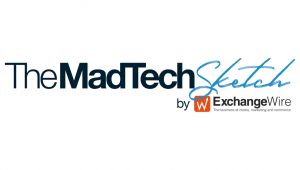How Publishers Should Manage The Growing Number Of Sales Channels
by Ciaran O'Kane on 8th Oct 2009 in News


The debate around non-premium display has been intensive of late – and the list of vendors vying to help publishers trade unsold inventory is growing by the week. From a publisher perspective it is becoming almost impossible to distinguish between all the different yield optimisers, ad networks and ad exchanges in the market.
With Pubmatic’s Ad Revenue conference due to tackle this very issue, a look at the present options available to publishers would be useful. The following examples will list the advantages and drawbacks for using a specific channel for trading unsold ad inventory.
The Ad Network Channel
The top DR ad networks in Europe are very good at what they do. They can successfully optimise campaigns so that advertisers achieve their campaign goals. Advertisers love this, and accordingly give lots of their DR budget to these successful ad nets. In turn, these networks can afford to buy unsold ad inventory for an agreed price from publishers every month. Some inventory will be more valuable, and the publisher and ad network can thrash out a payment agreement for different ad space.
Some would say this is an inefficient way to trade especially when there are platforms available to sell ad impressions to the highest ad network bidder – but a publisher has no way of knowing if the auction will generate any more revenue than a guaranteed deal with an ad net.
Yield Optimisation
Yield optimisers have become very active in the market in 2009. Rubicon, Improve Digital and Admeld all offer publishers a similar service: namely a platform to manage and optimise relationships with multiple networks. The “ad network” exchanges effectively auction off inventory to the highest bidder.
For a publisher who has to deal with a lot of ad networks, the yield optimisers streamline the process. From efficient payment to avoiding sales channel conflict, a publisher can successfully manage the entire ad network channel by using one of the yield optimisation vendors.
Chart: The Yield Optimisation Channel - Europe
This is great, but what if a publisher wants to sell direct to an agency or advertiser willing to pay more for ad impressions? Is an ad exchange seen as another channel to optimise even if it’s an agency buyer coming through the exchange? The answer to that is no, as yield optimisers only work with ad networks. How does the publisher trade with direct buyers?
The Ad Exchange Trade
Now ad exchanges have thus far done a pretty poor job of monetising unsold inventory. Publishers have been worried about sales cannibalisation and ad pricing, and as a result sub-standard inventory has been available to buyers on the trading platforms. Things are starting to change: the launch of the Doubleclick exchange, which offers more buyers and more control, is encouraging premium publishers to unsold inventory on to the exchange platforms.
Chart: The Ad Exchange Channel - Europe

Agencies are building demand-side platforms to access this inventory - and are looking to use their own data to buy audiences through the exchanges. Agencies will pay good rates to any publisher who can deliver these audiences.
Michael Zimbalist, VP of research and development operations at The New York Times Company, wrote a recent op-ed piece for Paidcontent.org about the reasons why agencies are building demand-side platforms and how it will affect publishers:
The motivation for the demand-side networks is simple. Agencies have always struggled to buy online display profitably because there are too many suppliers. Last year, Razorfish alone reportedly did business with more than 800 online media vendors. Think about that for a minute. Buyers in the TV world can get all the advertising they need from just a handful of vendors. The same goes for magazines and newspapers. Buying online display requires hundreds of suppliers, meaning more back-office expense in the form of billings, collections and accounting.
As a result, agencies have been increasing their spend on ad networks relative to their spend on individual sites, in part because of the lower price that networks offer, and in part because buying a network amounts to buying a bundle of sites all at once, simplifying the planning process and eliminating lots of overheard.
But agencies have woken up to the fact that even as they struggle to make online buying profitable, the ad networks are reaping huge operating margins. And they make these margins by doing essentially the same media planning work that agencies are supposed to be doing for their clients!If demand-side networks can squeeze out the supply-side networks, that would leave more margin for publishers and agencies to share. And agencies would actually pay less for non-premium display inventory while publishers could charge more.
This is a new reality publishers must come to realise: DR agencies want to buy direct, and are actively seeking to use propriertry data and technology to optimise campaigns on behalf of clients.
There are already a number of progressive UK publishers who have built private exchanges to auction off unsold inventory to agencies. They don’t employ the services of ad networks, and are now taking more of the media budget.
The transparency in pricing is a huge draw for these publishers: a flat fee is paid to the RightMedia and DoubleClick exchanges (ranging from 10% to 20%), and ad space is allocated to the highest bidding agency. Because there is no intermediary, the agency is likely to pay more to the publisher. In the present inefficient model you have little or no pricing transparency.
Here’s a crude example of what is happening in the market at the minute: Network A buys impressions from Publisher A for £1.05 CPM; Network A takes those impressions adds some “magic” optimisation and sells it to Agency A for £2 CPM. Publisher A has no idea at what price those ad impressions were sold on for – and Agency A has absolutely no idea at what price they were bought. Arbitrage rules supreme in the online display market.
It’s hard to ignore the growing influence of demand-side platforms - and dealing with the agencies directly might be actually increase ad pricing. But not all European and UK agencies are trading on the exchanges yet (!) so in the meantime it might be prudent for publishers to hire a Performance Manager or a PT to manage the growing number of sales channel options.
AgencyDisplayExchangePerformancePublisherTrading








Follow ExchangeWire